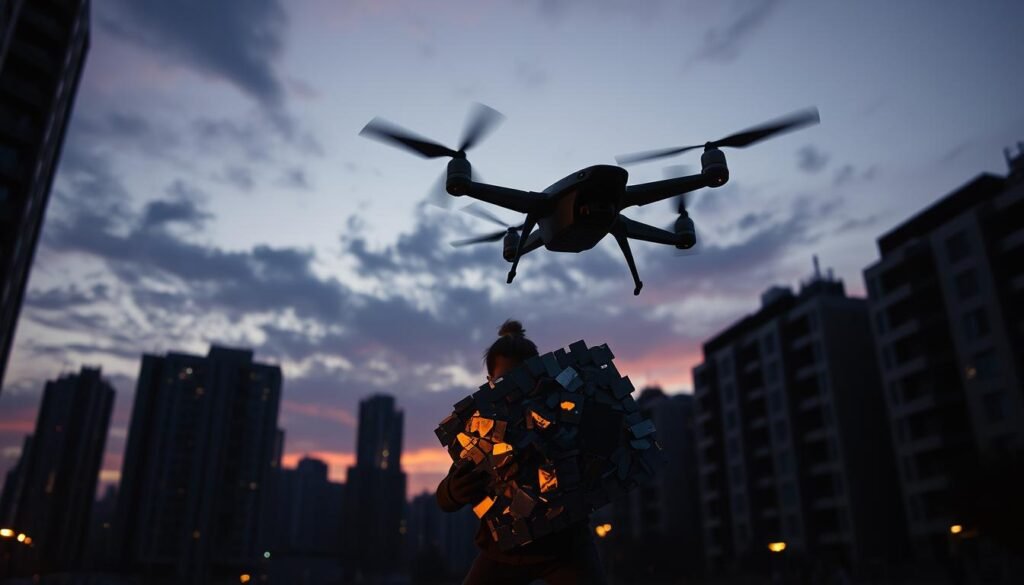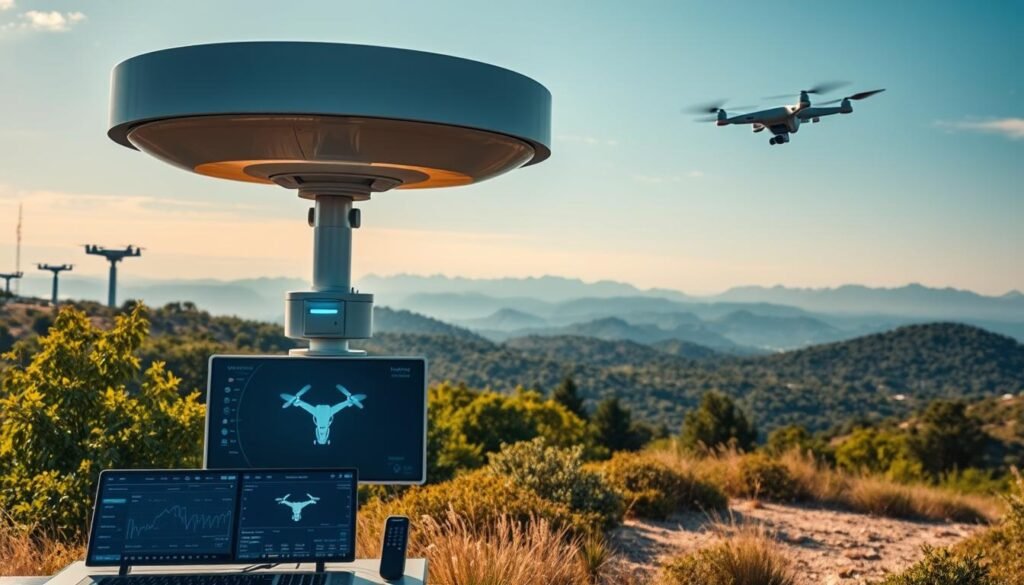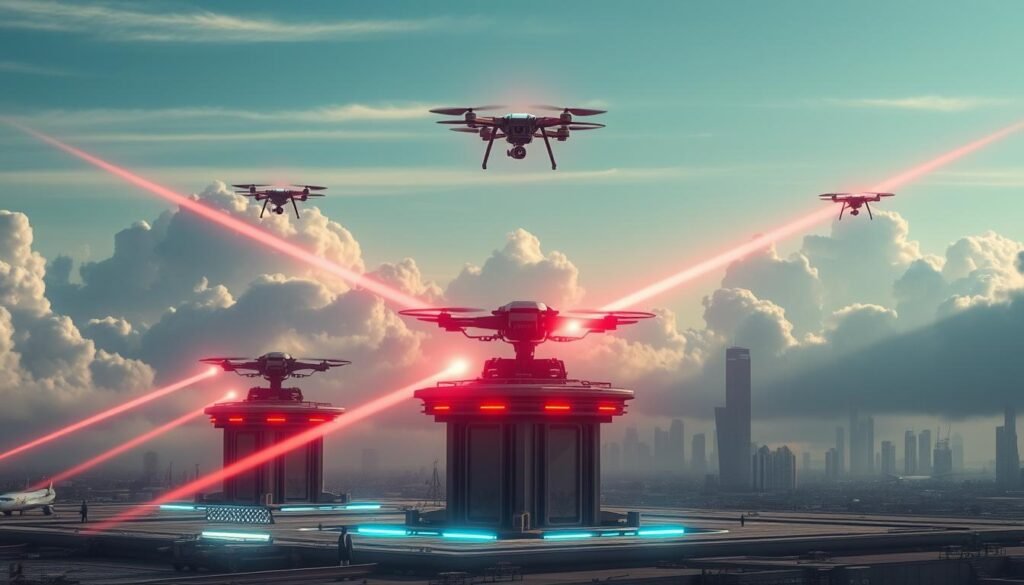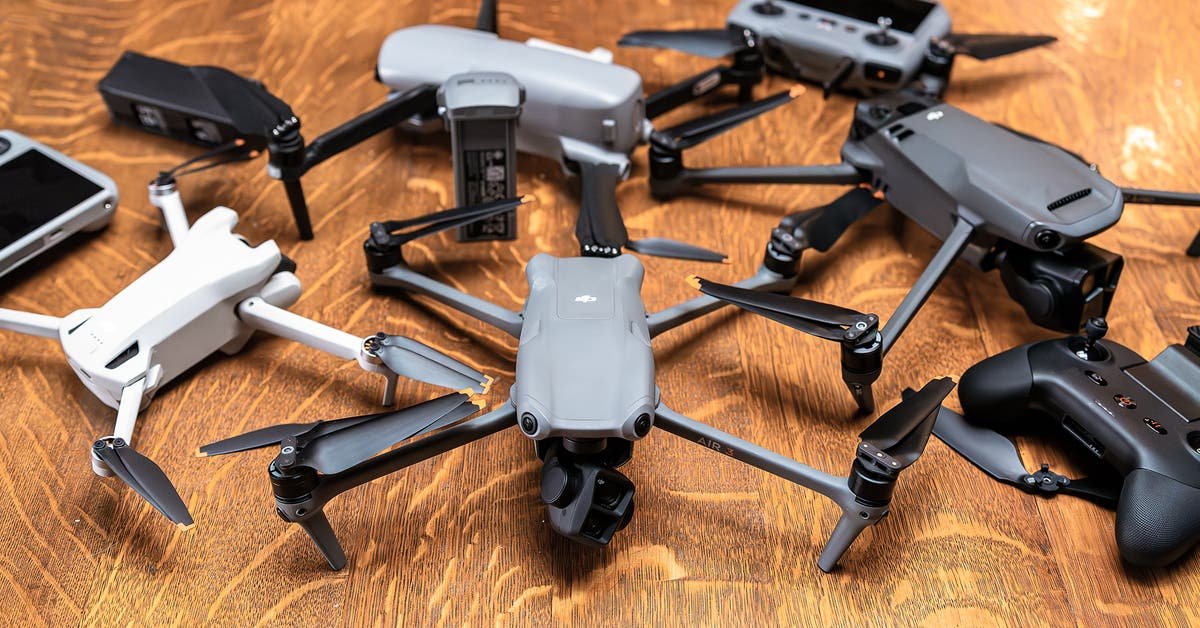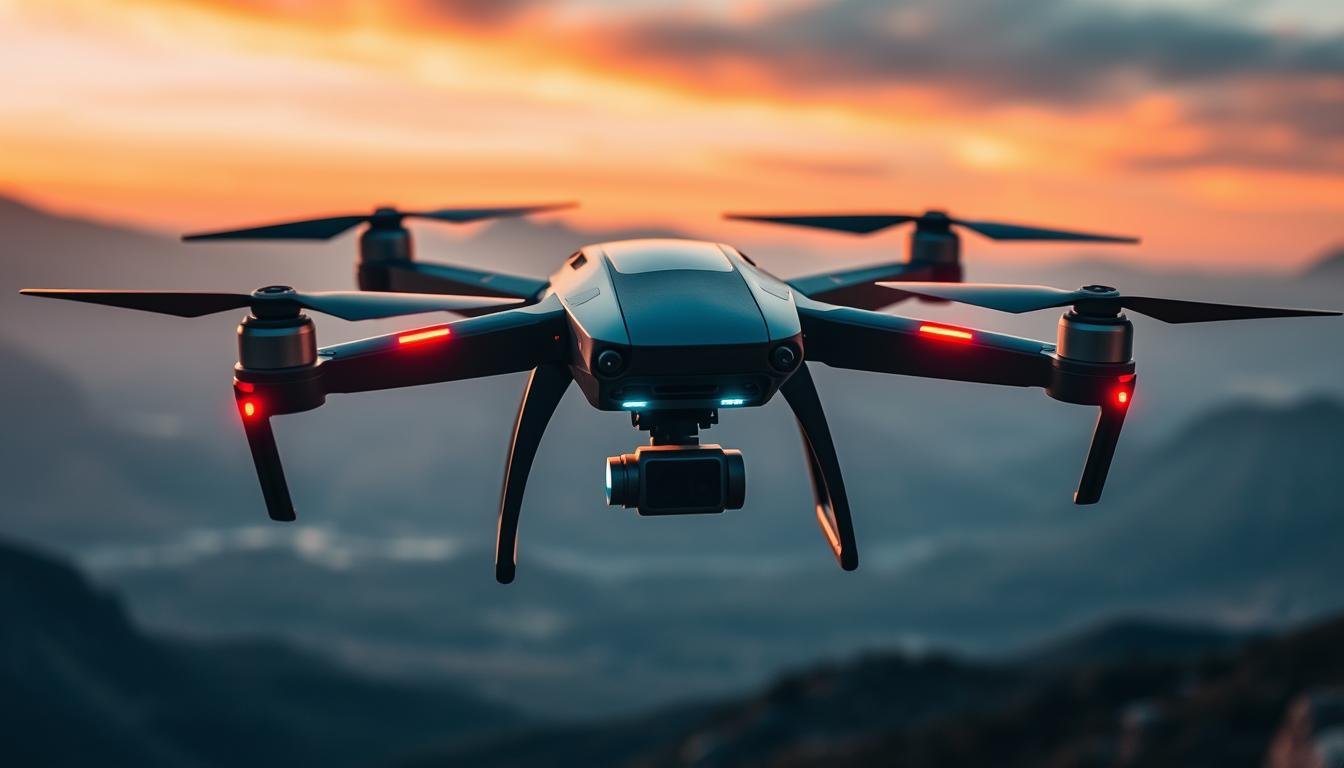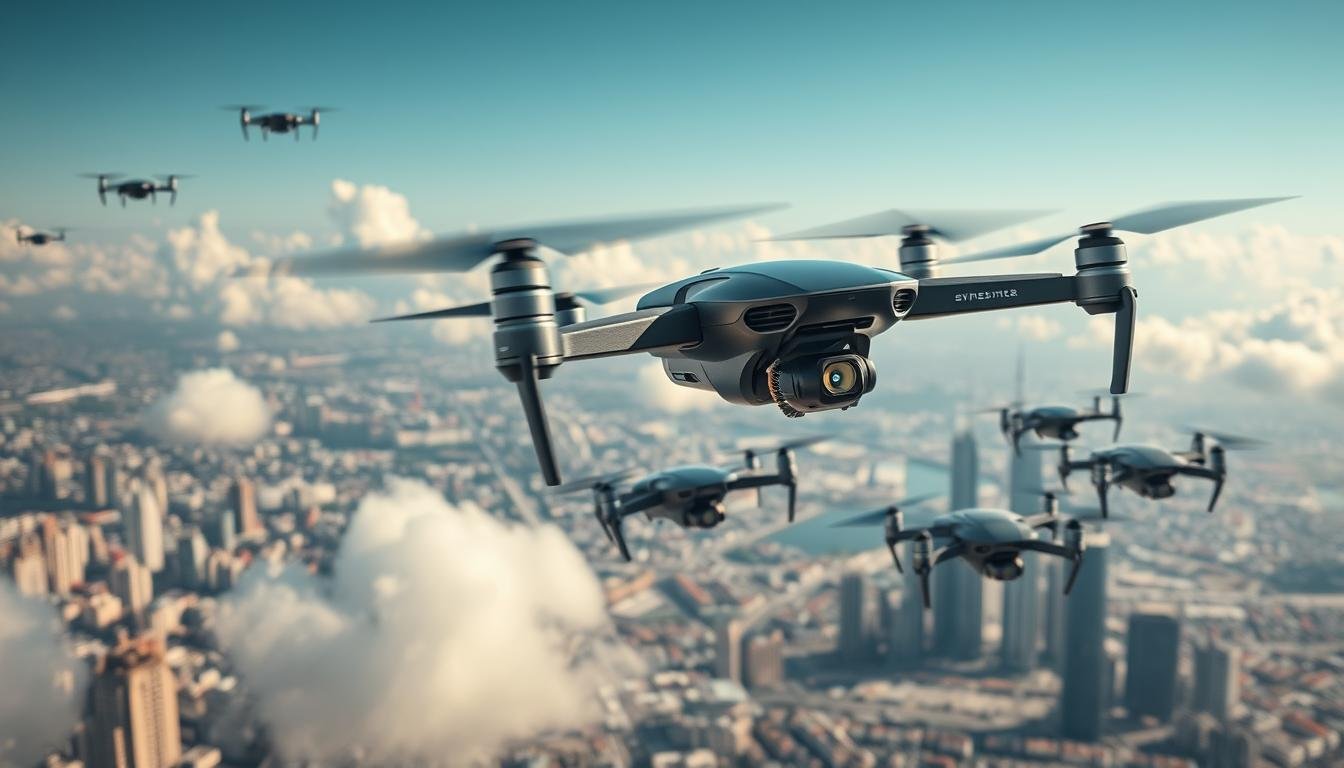In today’s technology-focused society, drones are widely used for various purposes ranging from photography to delivery services. Nonetheless, the extensive usage of these also gives rise to apprehensions regarding privacy and security. Understanding self defense against a flying drone is crucial in today’s world for protecting personal space and ensuring safety in public areas. This manual delves into efficient tactics and useful suggestions for self defense against a flying drone, helping you safeguard yourself from possible drone intrusions. By staying knowledgeable and ready, you can handle the obstacles presented by flying drones and keep your peace of mind intact.
Key Takeaways
- The threat of drones is growing, with numerous incidents highlighting their potential for harm.
- Countering drones requires a multi-faceted approach, including detection, identification, and implementation of appropriate countermeasures.
- While kinetic measures like shooting down drones may be tempting, they come with significant legal and safety risks.
- Emerging technologies, such as directed-energy weapons and advanced sensor systems, offer promising solutions for drone defense.
- Developing a comprehensive drone defense strategy is crucial to mitigate the evolving threat posed by these small, agile, and potentially dangerous flying machines.
Introduction: The Growing Threat of Drones
Drones are becoming more common, causing worries about their dangers. As drones get easier to use and cheaper, more incidents happen. This shows we need strong ways to fight the drone threat, drone incidents, and drone security challenges.
Recent Incidents Highlighting the Drone Threat
More drones are flying, leading to more drone incidents. Today, 102 countries use drones for military purposes. About 40 of these can launch deadly attacks.
The United Nations says countries like Israel and the US use drones for attacks. In June 2020, Azerbaijan started using armed drones too. This shows drones are getting more common in wars.
Criminals also use drones for bad things. They spy, smuggle goods, and even disrupt police work. This makes drone security challenges big problems.
| Incident Type | Examples |
|---|---|
| Military UAS Deployment | Israel, Iraq, Iran, UK, US, Turkey, France, UAE, Saudi Arabia, Egypt, Nigeria, Pakistan, Azerbaijan |
| Criminal Drone Activities | Smuggling contraband, surveillance, reconnaissance, disrupting law enforcement operations |
| Strategic Locations Targeted | Power plants, electrical grids, airports, government buildings |
“The proliferation of military UAS poses challenges to traditional notions of Asymmetric Warfare and impacts NATO-allied deterrence posture.”
Drone use is growing, in both good and bad ways. We need strong drone defense plans. Knowing the drone threat and drone security challenges helps us protect everyone and important places from drones.
Understanding Drone Defense Technologies
Drone use is growing fast. This makes drone defense technologies very important. These counter-drone systems help find, identify, and stop drone threats. They range from old kinetic weapons to new energy solutions.
Drone defense starts with finding and knowing the drone. This is done with many tools like radar and sensors. Once found, the right steps are taken to stop or damage the drone.
One cool way to stop drones is with birds like eagles. They can catch and take down drones. This shows how flexible and smart counter-drone methods can be. But, how well they work depends on where they are used.
The counter-drone world is always getting better. Now, people are working on systems that can find, know, and stop drones. The aim is to make a strong defense against drone threats.
Even with progress, there are still big challenges. Using these defenses in some places can break laws. This shows we need clear rules to use them right. Also, no single method works perfectly, so we keep trying to make them better.
As drones become a bigger problem, we need to keep working on counter-drone systems. They help protect important places, military work, and airspaces for everyone. Finding new ways to stop drones is very important for everyone.
Tracking and Detecting Drones
As drones become more common, finding ways to track and detect them is key. It’s hard to spot drones because they can fly anywhere and hide well. This makes it tough to keep them from causing trouble.
There are many ways to find and identify drones. We can use radar, radio scanners, sound sensors, and even our eyes. Each method has its own strengths and weaknesses. The right choice depends on where the drones are flying and what they’re doing.
Challenges in Drone Detection
Finding and tracking drones is very hard, especially in busy places. Radar can get confused by birds and drones because they look the same on radar. RF systems work better for drones flying low, as they can see around obstacles radar can’t.
| Detection Method | Advantages | Limitations |
|---|---|---|
| Radar | Able to detect most UAVs at long range | Struggles with low-flying drones, high false-positive rate due to similar radar cross-section with birds |
| Radio-Frequency (RF) Scanners | Can detect and triangulate drone location, can detect drones before launch | Limited range and ability to track multiple targets |
| Acoustic Sensors | Useful for detecting UUVs | Struggle with UAVs and UGVs |
| Visual Detection | Provides direct line of sight | Limited information, requires visual contact |
Finding out who is flying a drone and where they are is hard, especially in cities. Stopping a drone isn’t enough, as people might come back with new ones. So, finding and stopping the person flying it is key.
We need better ways to track and identify drones to keep everyone safe. This is important for places like power plants and police work. We must keep improving our drone detection tools to stay ahead of these new threats.
Kinetic Counter-Drone Measures
Defending against drones is crucial. Kinetic counter-drone measures are a direct and effective way to do this. They use guns, machine guns, missiles, snipers, and portable systems to destroy drones.
Most drones are slow and don’t have advanced defenses. This makes them easy targets for these weapons, if they’re close enough. This is good because it lets militaries and security forces use what they already have. They don’t need to buy expensive new gear.
| Counter-Drone Technology | Capabilities | Limitations |
|---|---|---|
| Guns, Machine Guns | Effective against low-altitude, slow-moving drones | Limited range and accuracy against smaller targets |
| Missiles | Able to intercept drones at longer ranges | Expensive to use against relatively inexpensive drones |
| Snipers | Precision targeting of individual drones | Requires line of sight and specialized training |
| Man-Portable Systems | Portable and easily deployable | Short effective range and limited targeting capabilities |
Kinetic counter-drone measures are simple but have a big problem. The best air defense systems might not be worth it for drones. This is because drones are often much cheaper than the missiles used by air defense.
As drones become a bigger threat, we need a mix of solutions. We should use kinetic counter-drone measures with other technologies. This will help keep our skies and important places safe.
self defense against a flying drone
Legal Considerations
Drones are becoming more common, making self-defense against them complex. Methods like guns, nets, and devices that disrupt radio waves might seem good. But, it’s important to think about the legal side of these actions.
Shooting down a drone can lead to serious charges or lawsuits. The laws about this vary by state. Using nets or other non-violent methods might be safer, but their legality is still unclear.
Using jamming or hacking to disable a drone could break laws about communications and computer fraud. It’s key to understand the drone defense laws to avoid trouble.
Recent cases show the growing problem of self defense against drones. In Kentucky, a man was arrested for shooting a drone near his house. Similar incidents have happened in New Jersey and California, leading to arrests.
Protecting one’s property is a valid concern. But, the laws on drone defense regulations are still evolving. It’s crucial to stay updated on legal drone countermeasures and work with police to handle drone threats safely and legally.
| Incident | Location | Outcome |
|---|---|---|
| Man shooting down a drone | Kentucky | Arrest due to the illegal nature of the act |
| Man shooting down a drone | Southern New Jersey | Arrest due to the illegal nature of the act |
| Man shooting down a drone | Rural California | Arrest due to the illegal nature of the act |
| Drone crashed on the White House lawn | Washington, D.C. | Incident led to increased security measures |
| Man attempted to fly a drone over the White House fence | Washington, D.C. | Arrest for the unauthorized drone operation |
“The legal aspect of shooting down a drone is covered; the current law prohibits individuals from shooting down a drone, emphasizing the need to involve law enforcement.”
As drone technology advances, so does the law around self defense against drones. It’s important to stay informed about legal drone countermeasures to handle this issue safely and responsibly.
Directed-Energy Weapons for Drone Defense
As drones become a bigger threat, military forces are looking at new ways to defend. They’re using directed-energy weapons like drone jammers and high-energy lasers. These tools are seen as a better choice than old-fashioned missiles.
The Advantages of Directed-Energy Weapons
One big plus of these weapons is how cheap they are. They cost much less to use than traditional weapons. This is because they run on electricity, not expensive ammo.
They also cause less damage to people and buildings. This makes them safer to use near cities. Plus, they’re easier to move around because they don’t need a lot of storage space.
The U.S. is spending $1 billion a year on these projects. They’re working on systems like the RFDEW and Dragonfire. These will be ready to use by 2027.
The U.S. Army has a new system called IFPC-HPM. It uses high-powered microwaves to fight off drones. This tech, along with lasers, is key to fighting low-cost drones.
“The collective push towards advancing directed-energy systems aims to minimize reliance on expensive missiles for drone defense across various U.S. military branches.”
But, there are still risks and trade-offs with these weapons. The military is working hard to make them safer and more effective. Using these weapons in a smart way is very important.
Emerging Technologies and Future Trends
As drones become a bigger threat, new drone defense technologies are emerging. The battle between drones and defenses will shape global security.
Drone swarms are a growing concern. These groups of drones can work together, posing a huge threat. They can overwhelm defenses and act as weapons.
Artificial intelligence (AI) is changing drones. They’re getting smarter, thanks to AI. This makes them more adaptable but also raises ethical questions.
| Emerging Technology | Impact on Drone Defense |
|---|---|
| Directed-Energy Weapons | Offer high-precision, non-kinetic options for neutralizing drones with minimal collateral damage. |
| Advanced Sensors and Computer Vision | Enhance drone detection and tracking, enabling more effective countermeasures. |
| Drone Swarm Disruption | Develop technologies to disrupt and overwhelm coordinated drone swarms, preventing them from operating effectively. |
The future of drone defense is a race. We must keep innovating to protect against drones. This will help keep us safe from these new threats.
Developing a Comprehensive Drone Defense Strategy
To fight the growing drone threat, we need a complete plan. This plan should include strong detection and many ways to stop drones. It’s important to have different layers of defense because no one method works all the time. We must keep learning and updating our defenses to keep up with drones.
Using the newest comprehensive drone defense, multi-layered drone protection, and integrated drone countermeasures is key. RF Jammers can stop drones nearby, but Directional Jammers work better over longer distances. Omni-directional Jammers are good against many drones at once but only cover a small area. Handheld Jammers are easy to move but can’t reach far and need someone to use them.
Kinetic Solutions, like drones that kill other drones, try to stop them by force. But they might hurt people or buildings. Directed-Energy Weapons, like lasers, can also destroy drones but need a clear view and could cause problems. GNSS Spoofing sends fake GPS signals to confuse drones.
| Countermeasure | Strengths | Limitations |
|---|---|---|
| RF Jammers | Effective in immediate area | Limited range, cannot target swarms |
| Directional Jammers | Longer range | Less effective against swarms |
| Omni-directional Jammers | Effective against swarms | Shorter range, potential for collateral interference |
| Handheld Jammers | Mobile, simple to use | Limited range, requires constant operator vigilance |
To beat the drone threat, we must keep learning and improving. The US military first made a plan to fight drones in 2021. They need better radar and sensors to find drones early. The Joint Counter-small Unmanned Aircraft Systems Office is working with special forces to fight drones better. DARPA is also looking into new drone-fighting tech.
In summary, a good drone defense plan needs many layers. It should use the latest tech and keep getting better. This way, we can protect important places and stop drones from causing trouble.
Conclusion
The threat of drones is growing fast. This has led to quick development of counter-drone tech in many fields. Yet, no single method has fully stopped the drone threat yet.
Creating a strong, layered defense is key. It must use many systems together to fight drones effectively. This is the only way to protect against the drone danger.
Innovation and testing must keep up with drone changes. It’s also important to use drone countermeasures legally and ethically. The FAA is working on new rules and systems for drone technology.
This makes finding good drone defense solutions even more urgent. The article looked at many counter-drone tools, like radar and lasers. Using these tools together can help protect against drone threats in the future.

